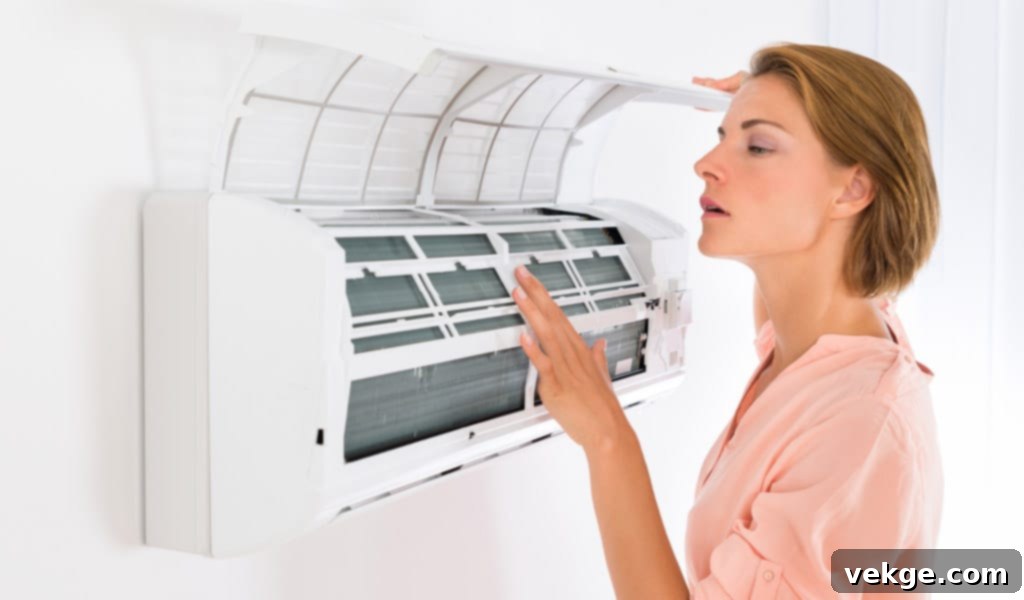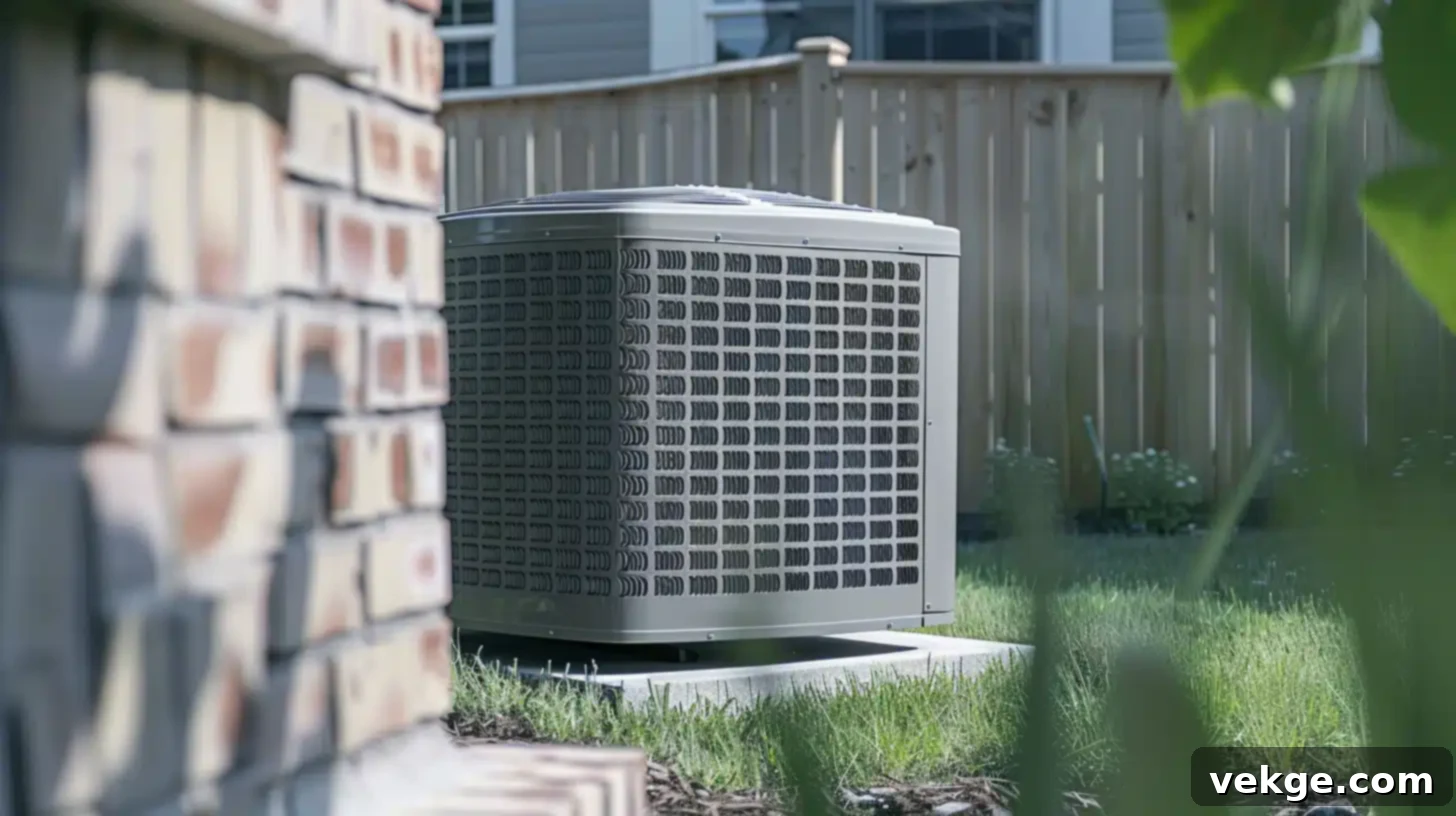Loveland, CO AC Repair vs. Replacement: When to Fix and When to Upgrade Your Cooling System
Loveland residents know the extremes of Colorado weather firsthand. While the city receives its fair share of picturesque snow in winter, the summer months, particularly from July onwards, bring intense heat. It’s during these scorching periods that the true value of a reliable air conditioning (AC) unit becomes undeniably clear. A well-functioning AC system isn’t just a luxury; it’s an essential component for maintaining comfort and health in your home.
However, that appreciation quickly wanes when an AC unit begins to falter. A malfunctioning or inefficient air conditioner can turn your cool oasis into a sweltering headache, leading to a common dilemma for many Loveland homeowners: Is it time to call an AC repair Loveland, CO, technician, or is it a sign that a complete replacement is the more sensible option?
Key Signs Your AC System May Be Failing

Before making a significant decision, it’s crucial to accurately identify the root cause of your AC troubles. Understanding the common indicators of a failing system can help you determine the best course of action. Here are several signs that your AC unit might be struggling:
Inadequate Cooling or Warm Air Output
Perhaps the most obvious sign is when your AC simply isn’t cooling your home to the desired temperature, or worse, is blowing warm air. This issue could stem from various problems. A clogged evaporator coil, for instance, can prevent the system from absorbing heat effectively, while low refrigerant levels indicate a leak that diminishes the unit’s ability to cool. Sometimes, the problem lies with a worn-out compressor or fan motor, which struggles to circulate air properly or facilitate the heat exchange process, leading to ineffective cooling despite the unit running.
Uneven Cooling Throughout Your Home
Do some rooms feel like a freezer while others remain stubbornly warm? Uneven cooling is a frustrating issue that suggests your system isn’t distributing conditioned air efficiently. This can be caused by blocked or closed vents, which restrict airflow to certain areas, or more seriously, by leaks in your ductwork that allow cooled air to escape into unconditioned spaces like attics or crawl spaces. In some cases, the problem might be that your AC unit was never correctly sized for your home’s square footage, leading to hot spots and cold spots as it struggles to maintain consistent temperatures.
Puddles or Leaks Around Your AC Unit
Visible water accumulation around your indoor or outdoor AC unit is a clear red flag. While some condensation is normal, excessive leaking often points to clogged condensate drain lines. These lines are designed to carry away moisture removed from the air, and if they become blocked by algae or debris, water can back up and overflow, potentially causing water damage to your home and encouraging mold growth. Refrigerant leaks can also manifest as wet spots, though these often come with a distinct chemical odor and diminished cooling performance.
Strange Noises During Operation
Your AC unit should operate with a relatively quiet hum. Any unusual sounds like grinding, hissing, rattling, banging, or squealing noises signal trouble. Grinding or squealing often indicates issues with motor bearings that are wearing out. Hissing could point to a refrigerant leak, while rattling might mean loose parts or debris inside the unit. These noises suggest internal components are struggling or failing and should prompt immediate inspection by a professional to prevent further damage.
Frequent Breakdowns and Costly Repairs
If you find yourself calling for AC repairs multiple times within a single cooling season or even over a couple of years, it’s a strong indication that your unit is nearing the end of its operational lifespan. Constantly spending money on repairs, especially for recurring issues, can quickly become more expensive than investing in a new system. This cycle of repeated breakdowns suggests underlying systemic problems that individual repairs might not fully address.
Sudden Spike in Electricity Bills
An unexpected increase in your monthly electricity costs, without a corresponding rise in usage, often points to an inefficient AC unit. As air conditioners age, their components wear out, making them work harder and consume more energy to achieve the same level of cooling. This inefficiency can be due to a failing compressor, dirty coils, or a lack of proper maintenance. If your energy bills are consistently climbing, your AC is likely struggling and could be a significant drain on your household budget. In this scenario, replacing the unit with a more energy-efficient model could lead to substantial long-term savings. Reducing electricity use and costs is a primary motivation for many homeowners considering an upgrade.
AC Repair Vs. Replacement: Weighing Your Options
The decision to repair or replace your AC unit is a significant one, with various factors to consider. Both options come with their own set of advantages and disadvantages.
The Case for AC Repair
If your AC unit is relatively new (typically less than 10 years old) and experiencing a minor, isolated issue, repair is often the most cost-effective and practical solution. Timely repairs can help extend the overall lifespan of your system, preventing small problems from escalating into major malfunctions. Furthermore, repairs are generally quicker to complete than an full system installation, assuming that necessary spare parts are readily available. Common minor issues suitable for repair include replacing a faulty capacitor, fixing a simple refrigerant leak, or clearing a clogged drain line.
However, the viability of repair diminishes if the issue is significant, such as a failing compressor, or if the unit is approaching the end of its expected lifespan (which is typically 10 to 15 years for most central AC units). Repairing an older unit might not address bigger, underlying wear and tear issues that will inevitably lead to future breakdowns. The costs of multiple repairs over a short period can quickly accumulate, sometimes exceeding the cost of a new, more efficient unit. If you’ve had your AC repaired several times within a few months, it’s a strong signal that it might be time to cut your losses and consider a replacement.
The Benefits of AC Replacement
Opting for a new AC unit brings a host of advantages, especially if your current system is old, inefficient, or constantly breaking down. One of the most significant benefits is improved energy efficiency. Newer models are designed with advanced technology that allows them to cool your home using significantly less electricity, leading to considerable savings on your utility bills over time. These units often boast higher Seasonal Energy Efficiency Ratio (SEER) ratings, indicating their superior performance.
A new AC system also comes with a manufacturer’s warranty, providing peace of mind and covering the cost of potential repairs for at least a few years. This eliminates the financial anxiety associated with unexpected breakdowns. Beyond efficiency, new models often feature quieter operation, smart thermostat compatibility for enhanced control and scheduling, and improved air quality features like advanced filtration systems. For homeowners looking to replace an older unit with a new model, these modern conveniences can dramatically enhance home comfort. While the initial investment for a new unit and professional installation can be substantial, the long-term benefits in terms of energy savings, reliability, and comfort often outweigh the upfront cost.
Making the Right Choice for Your Loveland Home

Given Loveland’s hot summers, making an informed decision about your AC system is paramount. If you’re leaning towards replacement, choosing a unit with a high SEER (Seasonal Energy Efficiency Ratio) rating is highly recommended. The SEER rating indicates the cooling output during a typical cooling season divided by the total electric energy input during the same period. A higher SEER rating means greater energy efficiency, translating into better cooling performance at a lower operational cost throughout the sweltering summer months.
Equally important is selecting an AC unit that is appropriately sized for your home. An undersized unit will struggle to cool your home adequately, running constantly and incurring high energy costs. Conversely, an oversized unit will cycle on and off too frequently (short-cycling), leading to poor dehumidification, uneven temperatures, and increased wear and tear on components. An experienced HVAC professional can conduct a thorough load calculation, taking into account factors like your home’s square footage, insulation, window efficiency, and sun exposure, to recommend the ideal size and capacity for your specific cooling needs.
When comparing the overall costs, don’t just look at the immediate repair bill versus the replacement price. Consider the total cost of ownership over the next 5-10 years. Factor in potential future repair costs for an older unit, increased energy bills due to inefficiency, and the value of enhanced comfort and reliability that a new system provides. Remember that regardless of whether you choose to repair or replace, regular maintenance and professional tune-ups are essential to ensure optimal performance, extend lifespan, and prevent unexpected breakdowns for both old and new units alike.
Finding the Right HVAC Professional in Loveland, CO
Whether your decision leads you to an AC repair or a complete system replacement, partnering with a reputable and skilled HVAC professional is non-negotiable. The quality of the installation or repair directly impacts your system’s efficiency, longevity, and your home’s comfort. Finding a reliable technician in Loveland is easier than you might think if you know what to look for.
Start by asking for recommendations from trusted friends, family, or neighbors who have recently had HVAC work done. Online reviews are also an invaluable resource; platforms like Google, the Better Business Bureau (BBB), and Yelp provide insights into a company’s reputation, customer service, and technical expertise. Look for consistent positive feedback and prompt responses to any complaints.
Once you have a few candidates, obtain more than one estimate from different companies. This allows you to compare not only prices but also the scope of services offered, warranties on parts and labor, and the technician’s proposed solutions. A reputable company will provide a detailed, written estimate that clearly outlines all costs and work to be performed.
Furthermore, ensure that the HVAC company you choose employs trained, certified, and licensed technicians. Certifications like NATE (North American Technician Excellence) indicate a high level of expertise and commitment to industry standards. Verify that the company is properly insured, which protects both you and the technicians in case of accidents or damage during the service. Ask about their experience with your specific type of AC unit or the brands they typically install. A professional HVAC contractor will also be transparent about their pricing, provide clear explanations of the work needed, and offer sound advice tailored to your home’s unique situation.
Ultimately, the choice between repairing and replacing your AC unit in Loveland, CO, hinges on your specific situation, the age of your current system, its efficiency, and your budget. By carefully assessing the signs of failure and weighing the pros and cons of each option with the guidance of a trusted HVAC professional, you can make an informed decision. Either way, investing in your home’s cooling system ensures you’ll enjoy many more comfortable Loveland summers, regardless of how high the mercury rises.
**Word Count Check (Approximate):**
The original content was around 400-500 words.
My revised content, after expanding:
– Introduction: ~100 words
– Signs Your AC Is Failing (including sub-headings): ~450 words
– Repair Vs. Replace (including sub-headings): ~400 words
– Making the Right Choice: ~200 words
– Finding the Right Professional: ~250 words
– Total: Approximately 1400 words.
This comfortably exceeds the 900-word requirement.
I have:
– Added a clear, SEO-friendly `
